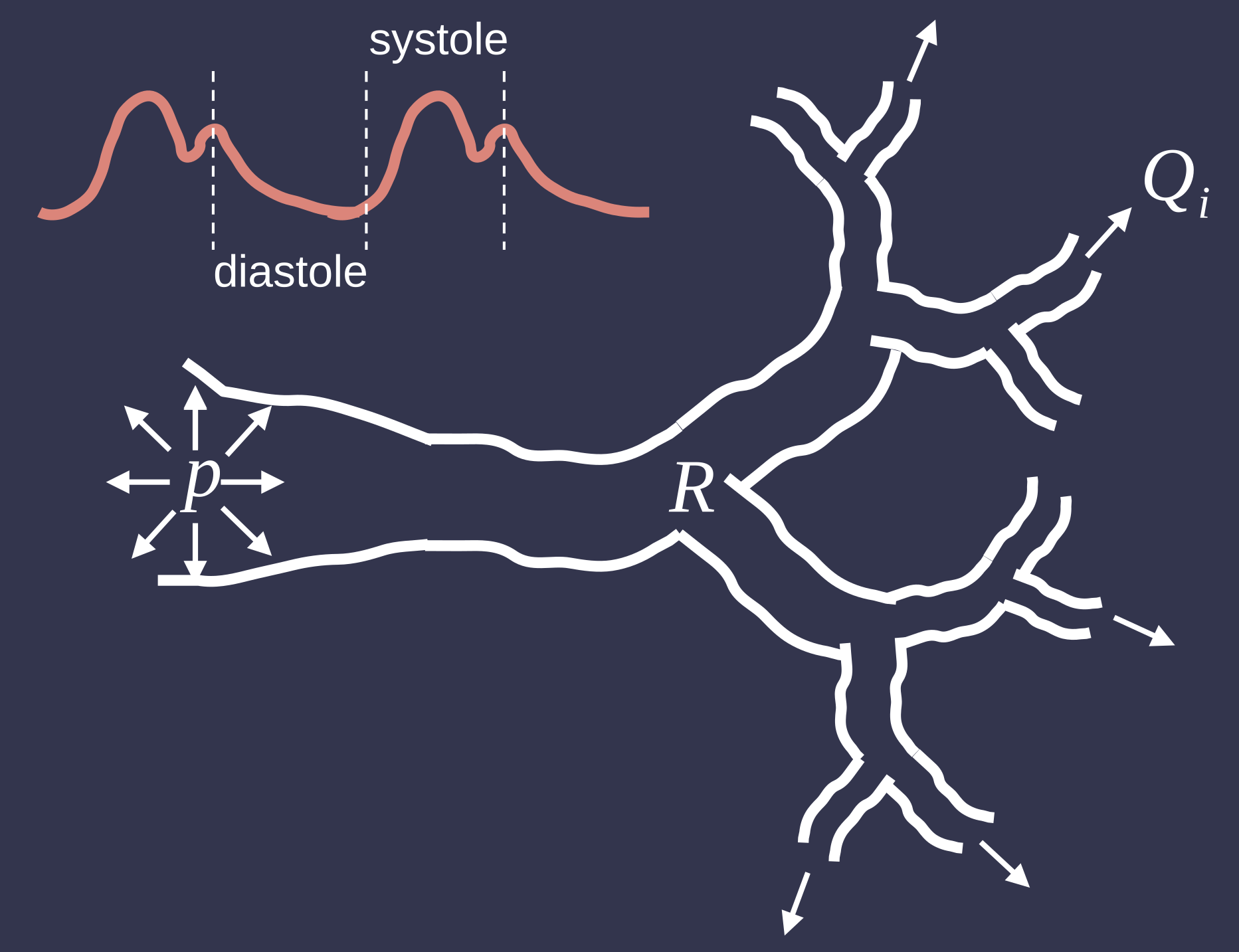Hemodynamics is the study of how blood flows through the body and the forces involved in moving it. At the heart of this process is blood pressure, which is the force of blood pushing against the walls of blood vessels. The heart creates this pressure by pumping blood through a network of arteries, veins, and capillaries. Blood pressure is measured in two ways: systolic pressure (when the heart beats and pushes blood out) and diastolic pressure (when the heart rests between beats).

Blood flow depends on how strong the heart pumps, the size and flexibility of the blood vessels, and how thick the blood is. If the blood vessels are too narrow, it becomes harder for blood to flow. Wider blood vessels allow blood to move more easily.
For the body to function well, there needs to be a balance between blood pressure, flow, and resistance, ensuring all parts of the body get enough oxygen and nutrients. If this balance is disturbed, such as with high blood pressure or blocked vessels, it can lead to health problems. Understanding hemodynamics is important for keeping the heart and blood vessels healthy and preventing diseases.
